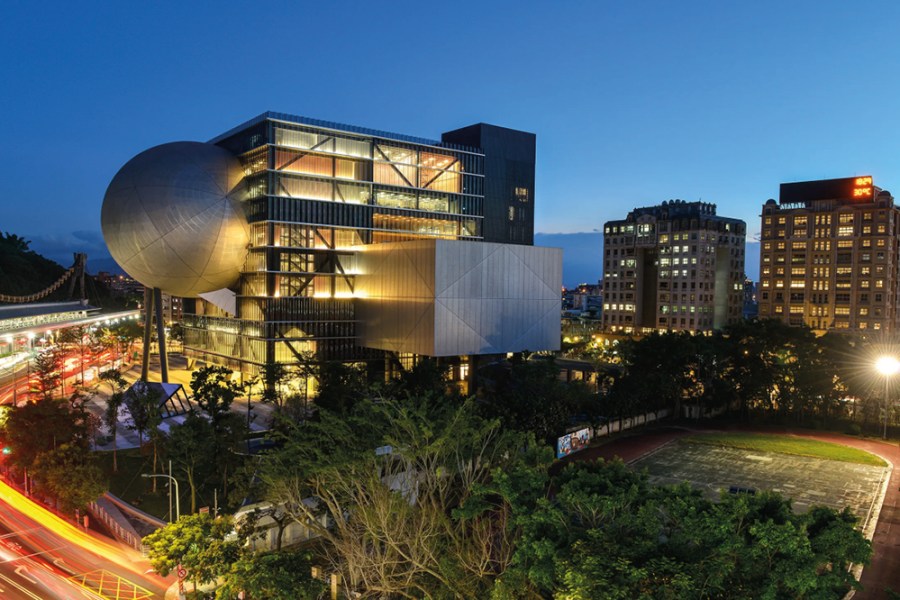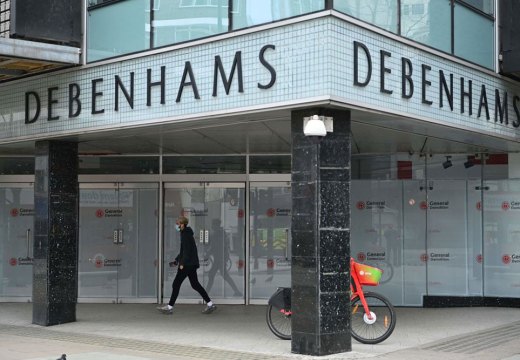In central London, a forest of cranes – picked out by tiny red safety lights – marks the site of Google’s future UK headquarters. Under development by BIG (Bjarke Ingels Group) and the Heatherwick Studio, this massive groundscraper – marching upon Kings Cross as if tailing the railway tracks – will house thousands of employees once it opens, as it is currently expected to in 2024. Elsewhere in London, brash Vauxhall continues to push west to meet the four ersatz chimneys of Battersea Power Station, lit like a Busby Berkeley set.
This is architecture in the service of strutting global economics. Below and out of sight, however, is the Thames Tideway Tunnel, an immense civil engineering project that might have given even Joseph Bazalgette pause. While Crossrail continues to be held on the red signal, this super-sewer tunnel, 25km long, runs between Abbey Mills in the east to Acton in the west, with connector tunnels out to the estuary. It will deal with foul water overflows, sewage leaks and more, freeing the Thames (and the sewerage system built by Bazalgette in the 19th century) from the overload posed by modern population density. Even with the costs and delays brought by the pandemic, it is likely to be operational by 2025 – just in time to meet new stresses from climate change.
Back above ground, the Thames waterside will gain a series of small parks and public spaces this year. New perching places at various junctures (including Blackfriars, Chelsea Embankment and Victoria Embankment) will draw attention back to the river and away from the road. Architects Hawkins Brown and landscape architects Gillespies are responsible for giving new life to the foreshore. In 1992, Richard Rogers and Mark Fisher, the future Labour culture minister, devoted a chapter of their book New London to that overlooked city feature, the Thames. Rogers, who died last month, would have enjoyed its renaissance.
Ambitious buildings planned in headier times, with fewer worries about health and climate, are opening around the world in 2022. After an online launch in 2021, the new Museum of Art and Photography in Bangalore, by leading Indian architectural practice Mathew and Ghosh, will open its doors this year. An extension to the Art Gallery of New South Wales is expected to be completed this year by SANAA, the Japanese firm that designed the translucent, snaking Louvre Lens. In Taipei, OMA (Rem Koolhaas’s Office for Metropolitan Architecture) are set to open a massive new performing arts centre (containing no less than three theatres) in the summer. OMA, like the Danish practice BIG, has captured the high ground for mega-projects, and must be accumulating stratospheric numbers of air miles.
The Factory in Manchester – OMA’s first major public building in the UK – has run into difficulties. This major arts building – funded by government as part of the Northern Powerhouse initiative – has been subject to budget overruns and delays, not all of which can be put down to the pandemic. Don’t hold your breath for an opening date. Elsewhere, the building commissioned by the City of London from New York practice Diller Scofidio + Renfro – a strangely stacked Centre for Music on the island site of the Museum of London – has been scuppered. Instead, after a hard-fought conservation battle the centre will be housed in Smithfield. Vaulted market halls from the 19th century will meet 21st century modernist clarity – an architectural collaboration between Stanton Williams and Asif Khan, with Julian Harrap as conservation specialist, which suggests that match-making is the future as we learn to pivot towards retrofitting and sustainability.
It is on the high street where match-making, between local authorities and those who most need and deserve vacant space, must come into its own. Some defunct department stores are already viable community centres. But the battle over Marks and Spencer’s flagship store in Marble Arch is likely to be more typical. Efforts to list the building have proved fruitless, and the firm shows no inclination to reconsider the pending demolition and rebuilding – a depressingly unenlightened stance.
Wakefield, in west Yorkshire, has enjoyed a cultural shot in the arm from David Chipperfield’s splendid Hepworth Wakefield museum and a new railway station – but with a short walk into the city centre one meets an endless prospect of shuttered premises, including the handsome classical law courts. No such blight touches the country’s leading universities. When Pembroke College Cambridge received a £35 million bequest from alumnus Ray Dolby (of sound-systems fame), it jump-started a development which will see the former Emmanuel United Reformed Church transformed into a music auditorium – part of Haworth Tompkins’ extensive new build scheme on Mill Lane. At the London School of Economics, a call has gone out for applicants for the last of their major development sites just as Grafton Architects’ magisterial Marshall Building is handed over to the university, in time for year’s Lent Term.
Unlimited access from just $16 every 3 months
Subscribe to get unlimited and exclusive access to the top art stories, interviews and exhibition reviews.














![Masterpiece [Re]discovery 2022. Photo: Ben Fisher Photography, courtesy of Masterpiece London](http://www.apollo-magazine.com/wp-content/uploads/2022/07/MPL2022_4263.jpg)
Why are fathers so absent from art history?